Simplified Climatology By Dr. Krishnanand

Simplified Climatology
Simplified Climatology: Exploring Earth’s Climate
Dive into the captivating world of climatology with “Simplified Climatology” by Dr. Krishnanand. This accessible textbook offers a clear and concise exploration of Earth’s atmospheric systems, making complex concepts easy to understand for students and enthusiasts alike.
Contents: Simplified Climatology
Chapter 1: Introduction to Climatology (Pages 6-18) Begin your journey into climatology with an overview of its fundamentals, including its scope and relevance in understanding Earth’s climate.
Chapter 2: Atmosphere: Structure and Composition (Pages 19-38) Explore the layers and composition of Earth’s atmosphere, unraveling its role in regulating global climate patterns.
Chapter 3: Solar Insolation (Pages 39-52) Understand the mechanisms of solar radiation and its influence on Earth’s temperature and climate.
Simplified Climatology
Chapter 4: Heat Budget (Pages 53-60) Delve into the balance of energy within Earth’s atmosphere, crucial for determining global climate conditions.
Chapter 5: Latitudinal Heat Balance (Pages 61-66) Examine how heat is distributed across different latitudes, shaping regional climate variations.
Chapter 6: Temperature Distribution (Pages 67-79) Analyze the spatial patterns of temperature across Earth’s surface, from polar regions to the equator.
Simplified Climatology
Chapter 7: Lapse Rate (Pages 80-86) Explore the rate at which air temperature changes with altitude, essential for understanding atmospheric stability.
Chapter 8: Adiabatic Lapse Rate (Pages 87-97) Understand the concept of adiabatic lapse rate and its implications for atmospheric processes.
Chapter 9: Inversion of Temperature (Pages 98-107) Investigate temperature inversions and their effects on local weather conditions.
Simplified Climatology
Chapter 10: Temperature and Pressure Belts of the World (Pages 108-123) Explore the global distribution of temperature and pressure belts, influencing regional climate patterns.
Chapter 11: Atmospheric Circulation (Tri-Cellular) (Pages 124-133) Analyze the three-cell model of atmospheric circulation and its role in shaping global wind patterns.
Chapter 12: Atmospheric Stability and Instability (Pages 134-146) Examine the factors influencing atmospheric stability and instability, impacting weather phenomena.
Simplified Climatology
Chapter 13: Primary Winds (Prevailing/Permanent) (Pages 147-155) Understand the primary wind systems that dominate global atmospheric circulation.
Chapter 14: Secondary Winds (Pages 156-163) Explore secondary wind patterns and their regional effects on climate.
Chapter 15: Tertiary Winds (Local Winds of the World) (Pages 164-174) Discover the intricate dynamics of local wind systems and their influence on regional climates.
Simplified Climatology
Chapter 16: Jet Stream (Geostrophic Winds) (Pages 175-187) Learn about the jet stream and its significance in steering weather systems across the globe.
Chapter 17: Monsoons: Concepts and Mechanism (Pages 188-196) Investigate the mechanisms behind monsoon systems and their impacts on seasonal rainfall patterns.
Chapter 18: Air Mass: Formation and Distribution (Pages 196-207) Understand the formation and movement of air masses, shaping weather patterns over large regions.
Simplified Climatology
Chapter 19: Air Fronts: Formation and Distribution (Pages 208-222) Explore the formation and movement of air fronts, leading to changes in weather conditions.
Chapter 20: Humidity: Concepts and Classification (Pages 223-230) Examine the concept of humidity and its classification, influencing atmospheric moisture levels.
Chapter 21: Clouds: Concepts and Classification (Pages 231-243) Learn about different types of clouds and their role in weather forecasting.
Simplified Climatology
Chapter 22: Rainfall: Types and World Distribution (Pages 244-256) Investigate various types of rainfall and their distribution across the globe.
Chapter 23: Tropical Cyclone: Origin and Development (Pages 257-282) Understand the formation and development of tropical cyclones, impacting coastal regions worldwide.
Chapter 24: Tropical Cyclone: Naming System (Pages 283-289) Explore the naming conventions for tropical cyclones and their significance in tracking storm systems.
Chapter 25: Temperate Cyclone: Origin and Development (Pages 290-298) Analyze the formation and characteristics of temperate cyclones, influencing weather in mid-latitude regions.
Chapter 26: Tropical Cyclone vs. Temperate Cyclone: Comparison (Pages 299-306) Compare and contrast the characteristics and impacts of tropical and temperate cyclones.
Chapter 27: Hydrological Cycle and Condensation Forms (Pages 307-324) Explore the hydrological cycle and various forms of condensation, shaping Earth’s water cycle.
Chapter 28: Fog Formation and Types (Pages 325-334) Learn about the formation and types of fog, influencing visibility and weather conditions.
Chapter 29: Smog Formation and Types (Pages 335-342) Investigate the formation and types of smog, resulting from air pollution and atmospheric conditions.
Chapter 30: Air Pollution (Pages 343-368) Examine the sources, impacts, and mitigation strategies of air pollution, affecting human health and the environment.
Chapter 31: ENSO + IOD (El Niño – La Niña – El Niño Modoki) (Pages 369-383) Understand the El Niño-Southern Oscillation (ENSO) and Indian Ocean Dipole (IOD) phenomena, influencing global climate patterns.
Chapter 32: Polar Vortex: Formation and Ozone Depletion (Pages 384-397) Explore the formation of polar vortex and its relationship with ozone depletion in the polar regions.
Chapter 33: Köppen’s Climatic Classification (Pages 398-404) Learn about Köppen’s climatic classification system, categorizing climates based on temperature and precipitation patterns.
Chapter 34: Thornthwaite’s Climatic Classification (Pages 405-413) Examine Thornthwaite’s climatic classification system, focusing on water availability and evapotranspiration.
Chapter 35: Trewartha’s Climatic Classification (Pages 414-425) Understand Trewartha’s climatic classification system, emphasizing temperature and humidity conditions.
Chapter 36: Urban Heat Island (Pages 426-435) Investigate the phenomenon of urban heat islands, resulting from human activities and urbanization.
Chapter 37: Global Climate Change (Pages 436-453) Explore the causes, impacts, and mitigation strategies of global climate change, shaping Earth’s future climate.
Chapter 38: Applied Climatology (Pages 454-465) Discover the practical applications of climatology in various fields, from agriculture to urban planning.
“Simplified Climatology” by Dr. Krishnanand is your essential guide to understanding Earth’s climate systems in an accessible and comprehensive manner. Whether you’re a student, educator, or climate enthusiast, this book will deepen your understanding of the dynamic processes shaping our planet’s climate.
Follow The Author On Facebook
Subscribe The Author On Youtube
Follow The Author On Instagram


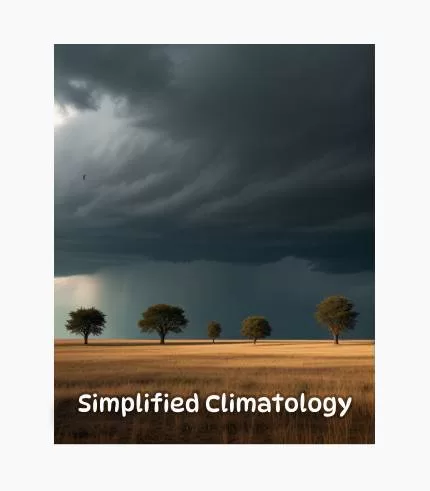

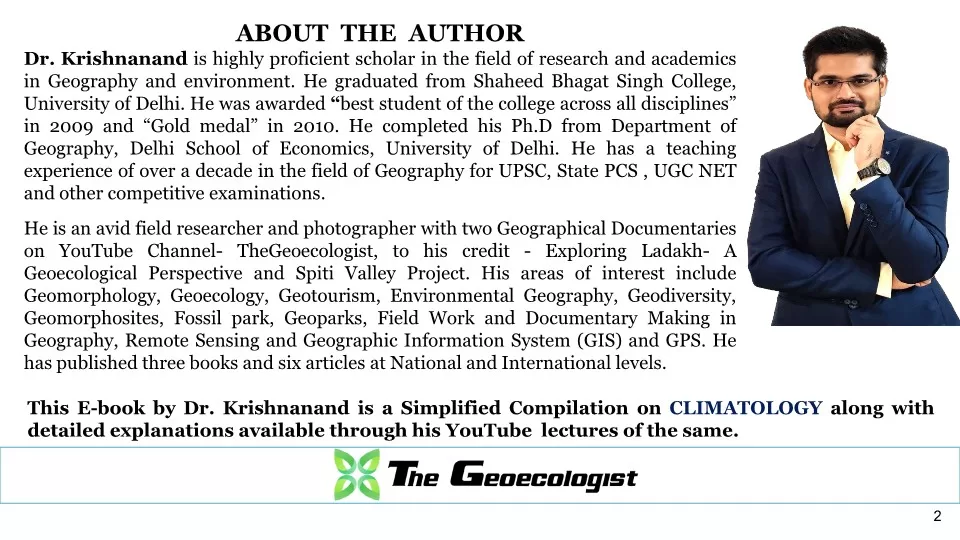

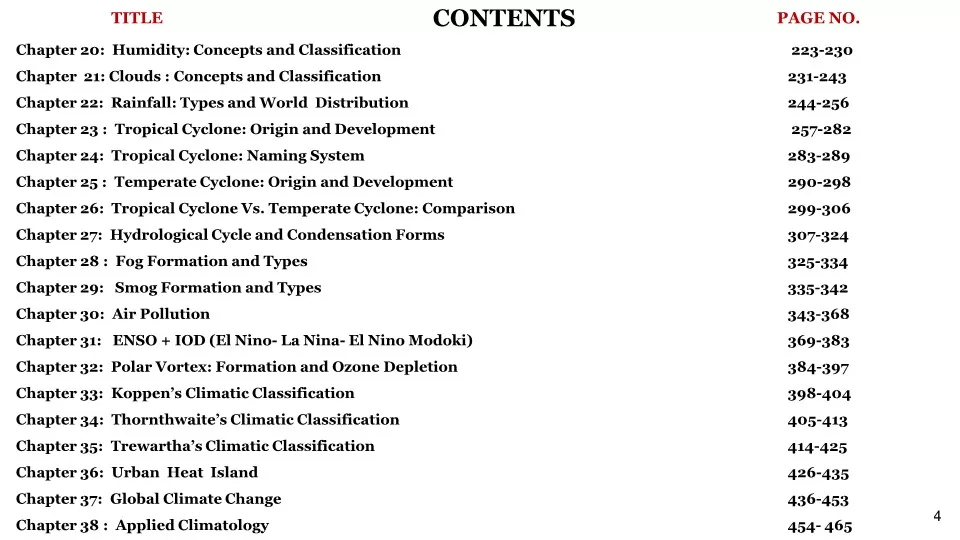


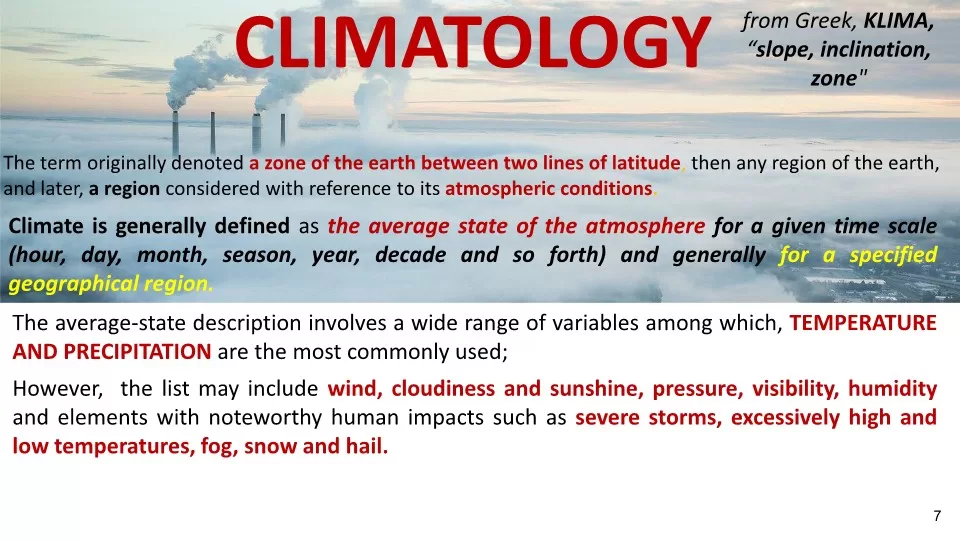
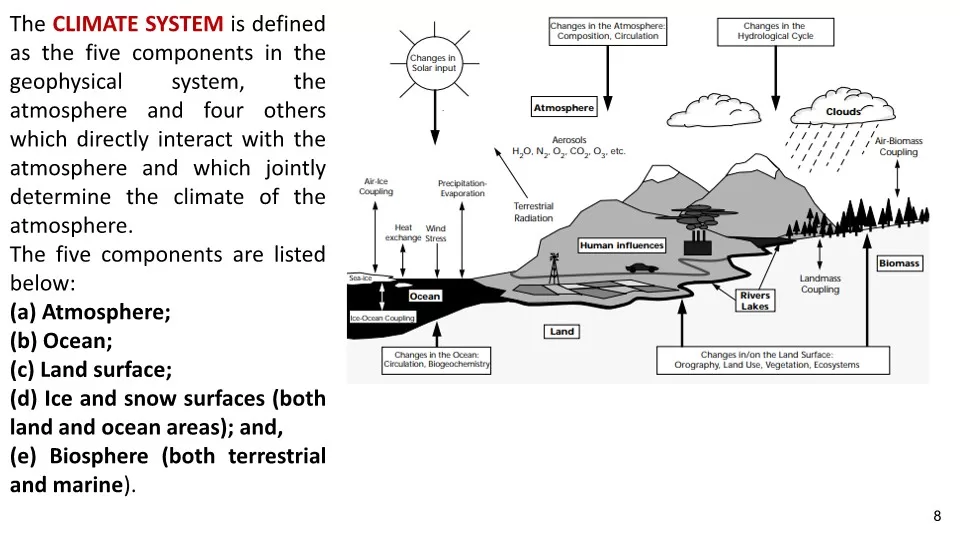

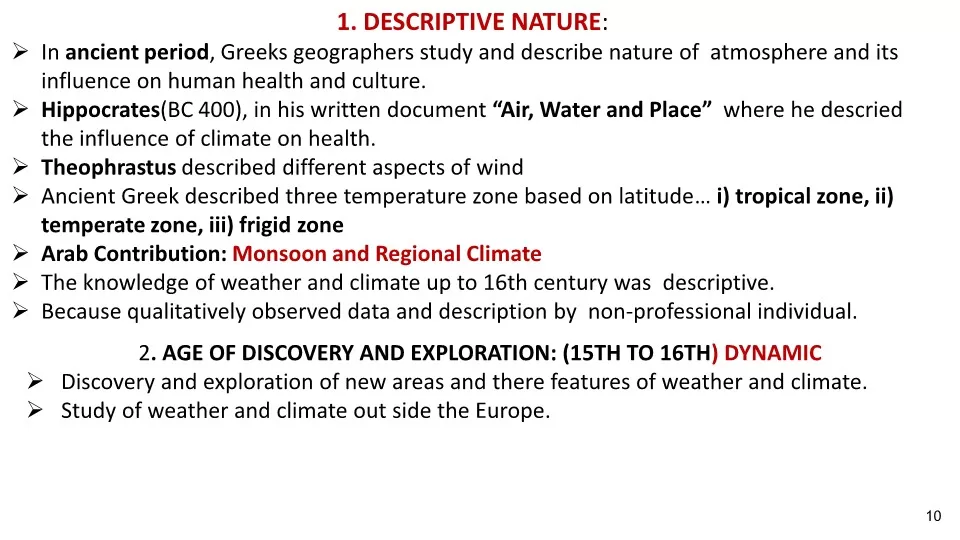













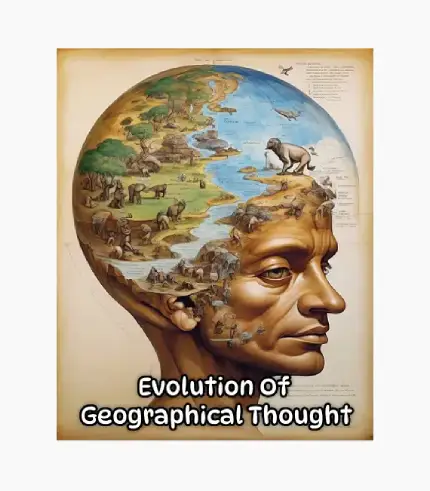









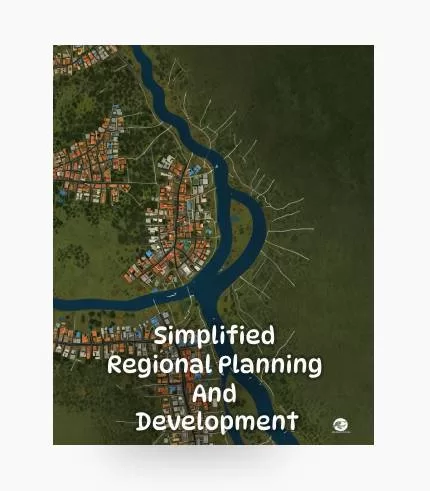



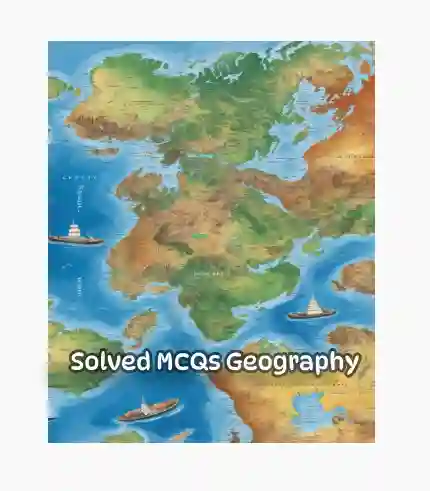

Reviews
There are no reviews yet.